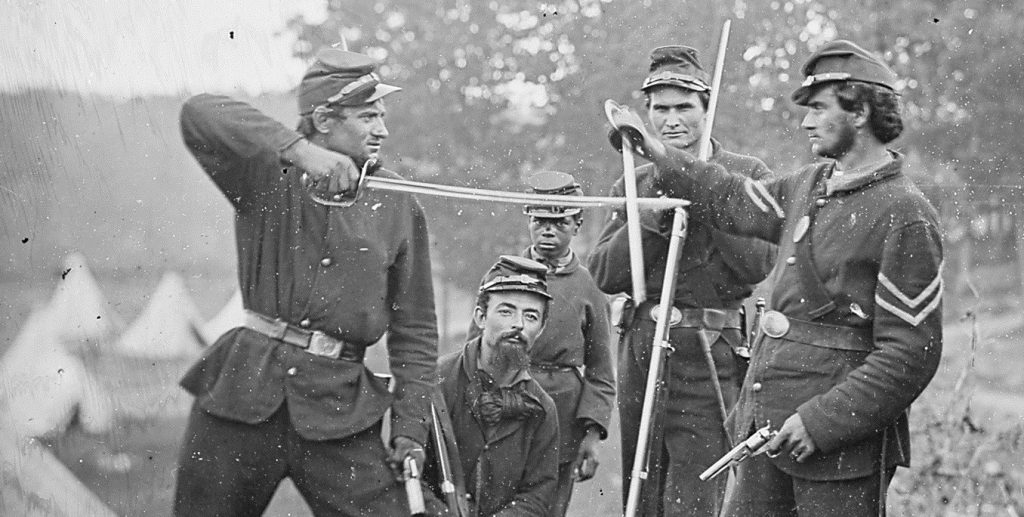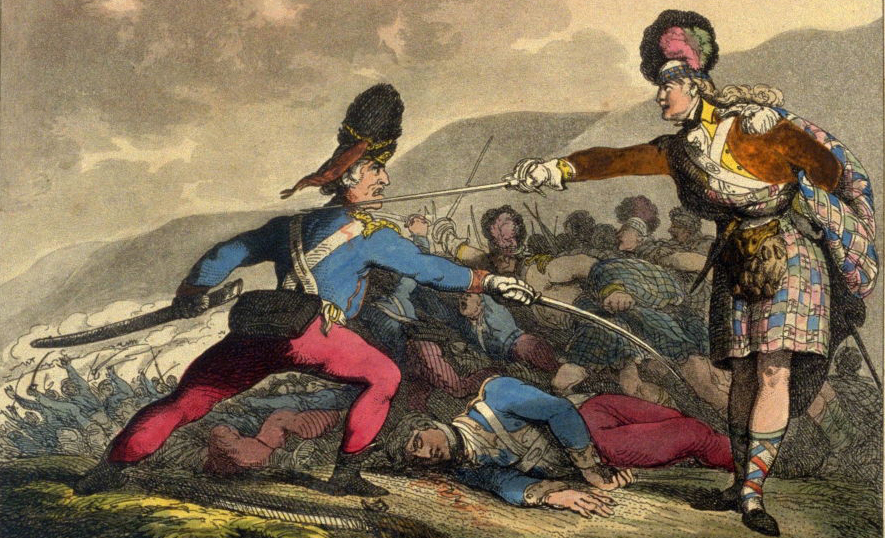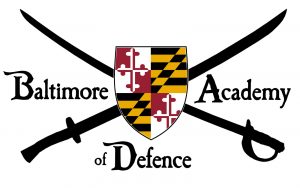
The Baltimore Academy of Defense is dedicated to exploring historical American swordsmanship in a fun, inclusive and safe environment.

American swordsmanship has a rich written tradition beginning in 1734 in colonial Jamestown with the printing of the first American book on smallsword fencing by William Blackwell, to the last official US military swordsmanship manual written by famous U.S. Army Second Lieutenant (later General) George S. Patton in 1914.
Regardless of your level of experience (from novice to master) or your interest (exercise, martial arts, fencing, LARP, living history or reenactment) B.A.D’s historical swordsmanship program has something to offer you.
American Military Saber


The Sabre (early/British english) or saber (modern American english) typically refers to a type of single edged sword with a curved blade most often associated with the light cavalry of the Civil War and Napoleonic (War of 1812) periods. Sabers of various styles were carried into conflict by Americans from the earliest colonial days until World War I.
Primarily a cutting weapon, yet still very effective in the thrust, the traditional military Saber is a much heavier weapon than modern fencing Sabers, which have more in common with the Italian dueling saber popularized in the late 19th century.

Originally associated with Central-Eastern European cavalry such as the Hussars, the American method for using this sword draws most of it’s inspiration from the traditional method of the Highland broadsword by way of the British military tradition.

While exploring the full range of American Saber sources, instruction at the Baltimore Academy of Defense is focused on the method of West Point Military Academy swordsmanship instructor Brevet Major Henry C. Wayne’s 1850 “SWORD EXERCISE, ARRANGED FOR MILITARY INSTRUCTION” printed in Washington DC and it’s traceable lineage back through the British method of Roworth and Angelo to the Highland broadsword method of Thomas Page.
Naval Cutlass

A cutlass is a short (typically about a 26″ blade), broad, Saber or slashing sword, with a straight or slightly curved blade sharpened on the cutting edge, and a hilt often featuring a solid cupped or basket-shaped guard most often used at sea.
This weapon often brings to mind the romance of the golden age of piracy and the call of the sea. The American method comes to us from the Swordmaster at the US Naval Academy in nearby Annapolis Maryland; A. J. Corbesier’s 1869 PRINCIPLES OF SQUAD INSTRUCTION FOR THE BROADSWORD. Download the treaties here.
Bowie Knife

A Bowie knife (pronounced BOO-ee) is a pattern of fixed-blade fighting knife created by James Black in the early 19th century for Jim Bowie, who had become famous for his use of a large knife at a duel known as the Sandbar Fight. The Bowie family has roots right here in Maryland.
Despite its immense popularity in the 19th century there is limited written work surviving on the use of the bowie knife. The content of our system has been drawn from a variety of historical sources, especially the work of Col Anthony J. D. Biddle Sr. (download his book here), John Styers, and the contemporary research of Paul Kirchner, Dwight C. McElmore, and William Cassidy.
Smallsword


The smallsword is a light one-handed sword specialized for thrusting which evolved from the longer and heavier rapier of the late Renaissance. The smallsword is thought to have appeared in France and spread quickly across the rest of Europe and America, the height of the small sword’s popularity was between mid 17th and late 18th century. The weapon was a popular choice for dueling as well as recreation and it eventually developed into Classical and then Olympic Foil and Épéefencing, both weapons find their origin in the smallsword
While exploring the range of American sources, instruction at the Baltimore Academy of Defense is focused on the method of West Point swordsmanship instructor Brevet Major Henry C. Wayne’s 1850 “SWORD EXCERCISE, ARRANGED FOR MILITARY INSTRUCTION” and it’s traceable lineage from the French method of La Boëssière.
Experienced Fencers Wanted




